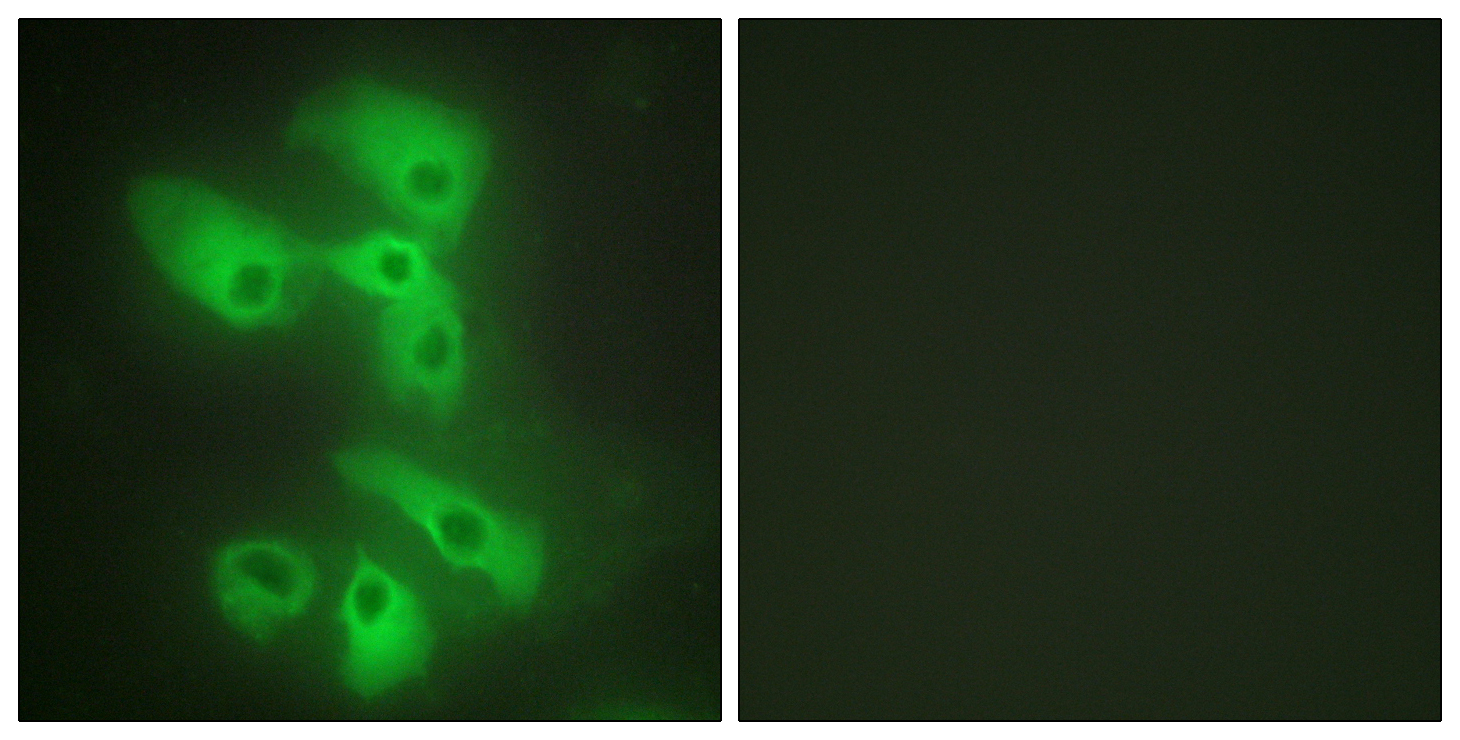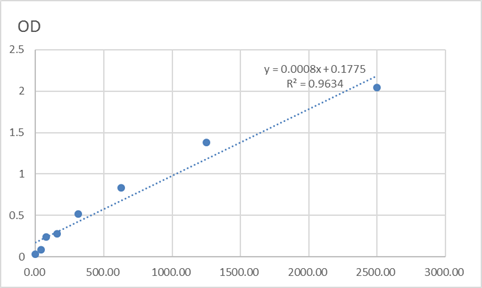Total JIP-2 Cell-Based Colorimetric ELISA Kit
- Catalog No.:KA3711C
- Applications:ELISA
- Reactivity:Human;Mouse;Rat
- Gene Name:
- JIP2
- Human Gene Id:
- 23542
- Human Swiss Prot No:
- Q13387
- Mouse Swiss Prot No:
- Q9ERE9
- Storage Stability:
- 2-8°C/6 months
- Other Name:
- C-Jun-amino-terminal kinase-interacting protein 2 (JIP-2) (JNK-interacting protein 2) (Islet-brain-2) (IB-2) (JNK MAP kinase scaffold protein 2) (Mitogen-activated protein kinase 8-interacting protein 2)
- Detection Method:
- Colorimetric
- Background:
- alternative products:Experimental confirmation may be lacking for some isoforms,function:The JNK-interacting protein (JIP) group of scaffold proteins selectively mediates JNK signaling by aggregating specific components of the MAPK cascade to form a functional JNK signaling module. JIP2 inhibits IL1 beta-induced apoptosis in insulin-secreting cells. May function as a regulator of vesicle transport, through interations with the JNK-signaling components and motor proteins.,similarity:Belongs to the JIP scaffold family.,similarity:Contains 1 PID domain.,similarity:Contains 1 SH3 domain.,subcellular location:Accumulates in cell surface projections.,subunit:Forms homo- or heterooligomeric complexes. Binds specific components of the JNK signaling pathway namely JNK, MAPKK7 and MLK2, MLK3 and DLK. Also binds the proline-rich domain-containing splice variant of apolipoprotein E receptor 2 (ApoER2). Binds the cytoplasmic tails of LRP1 and LRP2 (Megalin). Binds the TPR motif-containing C-terminal of kinesin light chain, Klc1, pre-assembled MAPK8IP1 scaffolding complexes are then transported as a cargo of kinesin, to the required subcellular location (By similarity). Interacts with the cytoplasmic domain of APP.,tissue specificity:Expressed mainly in the brain and pancreas, including insulin-secreting cells. In the nervous system, more abundantly expressed in the cerebellum, pituitary gland, occipital lobe and the amygdala. Also expressed in fetal brain. Very low levels found in uterus, ovary, prostate, colon, testis, adrenal gland, thyroid gland and salivary gland.,
- Function:
- MAPKKK cascade, protein complex assembly, cell surface receptor linked signal transduction, enzyme linked receptor protein signaling pathway, transmembrane receptor protein tyrosine kinase signaling pathway, signal complex assembly, intracellular signaling cascade, protein kinase cascade, JNK cascade, positive regulation of signal transduction, regulation of protein kinase cascade, positive regulation of cell communication, positive regulation of protein kinase cascade, stress-activated protein kinase signaling pathway, regulation of stress-activated MAPK cascade, positive regulation of stress-activated MAPK cascade, cellular response to stress, cellular macromolecular complex subunit organization, cellular macromolecular complex assembly, regulation of MAPKKK cascade, positive regulation of MAPKKK cascade, cellular protein complex assembly, macromolecular complex subunit organization,re
- Subcellular Location:
- Cytoplasm . Accumulates in cell surface projections. .
- Expression:
- Expressed mainly in the brain and pancreas, including insulin-secreting cells. In the nervous system, more abundantly expressed in the cerebellum, pituitary gland, occipital lobe and the amygdala. Also expressed in fetal brain. Very low levels found in uterus, ovary, prostate, colon, testis, adrenal gland, thyroid gland and salivary gland.
- June 19-2018
- WESTERN IMMUNOBLOTTING PROTOCOL
- June 19-2018
- IMMUNOHISTOCHEMISTRY-PARAFFIN PROTOCOL
- June 19-2018
- IMMUNOFLUORESCENCE PROTOCOL
- September 08-2020
- FLOW-CYTOMEYRT-PROTOCOL
- May 20-2022
- Cell-Based ELISA│解您多样本WB检测之困扰
- July 13-2018
- CELL-BASED-ELISA-PROTOCOL-FOR-ACETYL-PROTEIN
- July 13-2018
- CELL-BASED-ELISA-PROTOCOL-FOR-PHOSPHO-PROTEIN
- July 13-2018
- Antibody-FAQs



